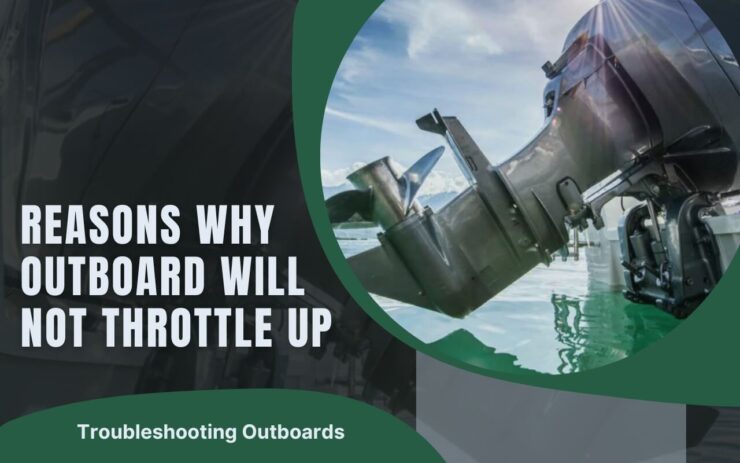The outboard motor has an engine, gearbox, and propeller. All of which determine the overall performance of the outboard.
Since there are multiple components inside, you face many different problems. One of them is outboard not throttling up properly.
What are the reasons why the outboard will not throttle up?
Outboards may stop throttling up due to bad spark plugs. They can easily get corroded and accumulate salt. Like spark plugs, you’ll have to check for clogs in the fuel filter. Other than that, tangled propellers can interrupt the throttling process directly. Finally, the gas can be degraded.
Anyways, that was a compilation of the possible reasons that stop outboard from throttling up. Clearly, these reasons need to be discussed and further elaborated on.
We have also provided necessary solutions for them so stick us with the end!
Table of Contents
ToggleTroubleshooting Outboards That Aren’t Throttling Up: 6 Problems & Solutions
A boat’s average performance depends on an outboard. Of course, when the outboard is malfunctioning, your Sunday will be ruined.
But luckily, you can avoid such occasions by being extra careful. All you need is a little bit of information and you’re all set!
There are other outboard problems like voltage regulator issues in Mercury outboards. You can totally solve these problems by yourself!
To keep it simple and easy, we’ve categorized the problems and provided solutions accordingly. Sit back, relax and go through them one by one!
Problem 1: Bad Spark Plugs Can Cause Outboard Throttling
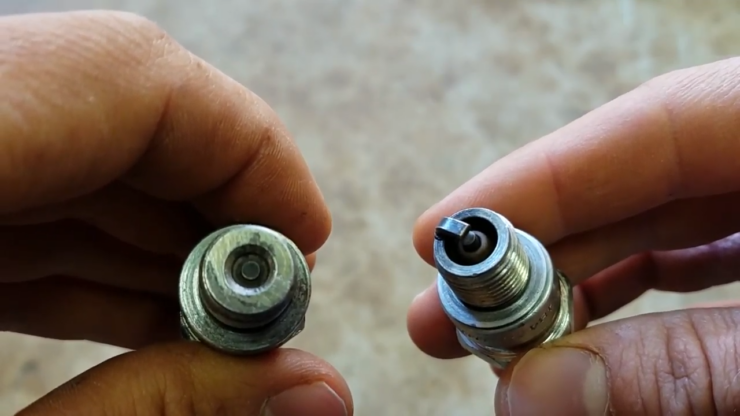
Your outboard’s engine ignition system solely depends on the spark plugs. If your outboard isn’t throttling up, they’re most likely to be the reason.
Spark plugs can accumulate minerals like salt over time. They can also get corroded. When this happens, your outboard motor will fail to start up smoothly.
You’ll also notice that the start-up noise is a little different. Luckily, you can solve this problem by yourself.
Solution: Check & Replace the Spark Plugs
If the spark plugs are the culprit, then you have no choice but to replace them. But before that, you should check them out thoroughly.
First, locate the spark plugs of the outboard motor. Start by looking for any signs of salt and corrosion in the spark plugs. Don’t forget the coil wires as well.
If you can’t find any traces then your spark plugs might be in good condition. That’s good news but you can’t just eliminate spark plugs from the possibility just yet.
Take a spark plug gap tester and check the ignition spark. If the air gap isn’t optimal, the engine won’t start.
If the gap is altered, change it to the appropriate gap. The outboard manual will contain related information.
If you do find corrosions, then there’s no other choice but to replace them.
Luckily for you, we’ve had our experts recommend some great picks-
Simply pick whichever spark plugs you like more and get the old ones replaced!
Sometimes it’s also possible to have no spark in one cylinder in Mercury outboards. In that case, the procedure is a little different.
Problem 2: Clogs In Fuel Filter Can Interrupt Outboard From Throttling Up
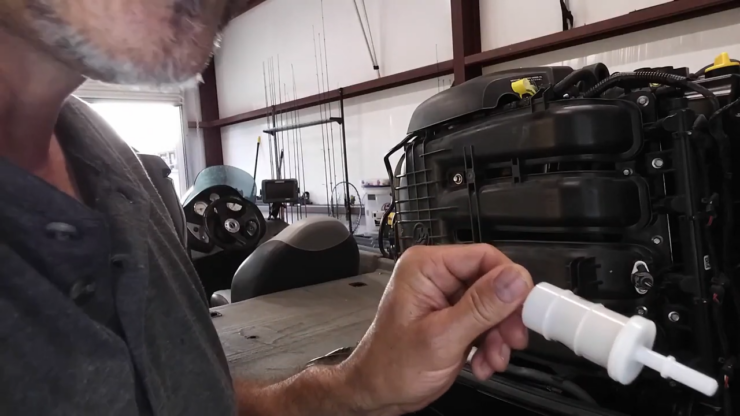
One of the prominent reasons behind outboard motors not starting up is clogged fuel filters. If the fuel filter itself is blocked due to dirt and debris, it’ll have to work harder.
This puts pressure on your outboard motor and causes throttling problems.
Solution: Clean the Fuel Filter
Cleaning the fuel filter is your best bet in this case. Gasoline can degrade the filter’s plastic over time.
So, cleaning and draining the gas once in a while is a good practice.
Before you start the process, get some gloves and a container. Put the container underneath and open up the fuel filter. Now, remove the fuel filter’s cover. The excess gasoline will get drained automatically.
If there are particles inside, you’ll see them. Get them out with your hands or use a small stick. Take your time and clean them up.
If the interior has been degraded, then you’ll have to replace the fuel filter. This will solve your outboard motor problem right away.
Problem 3: Tangled Propellers Can Cause Throttling
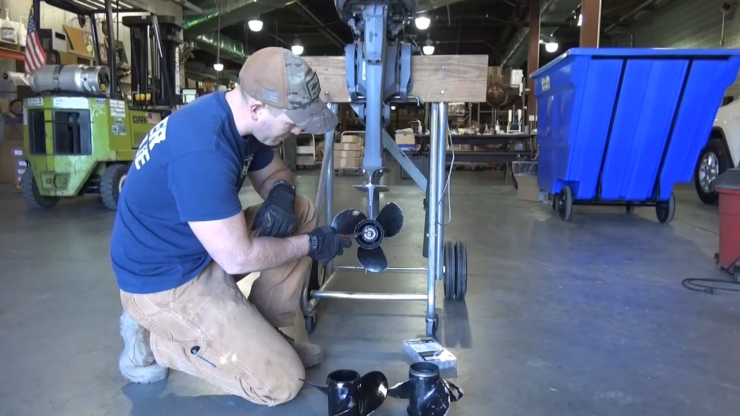
This isn’t too technical of a problem. But it can still happen and you may have overlooked it. This is one of the most common reasons why outboard motors will not rev up.
Of course, the propeller spins around to accelerate the boat. While it spins, it’s not too uncommon for propellers to tangle with debris or seaweed.
If the propeller has tangled with something, your engine will vibrate.
Solution: Inspect the Propeller
To do this, you’ll have to get the boat on a trailer. This makes the propeller more accessible. Luckily, getting a boat on a trailer is super easy.
When you’re done, go to the propeller area and you’ll see what’s causing the issue. Remove the materials that have gotten tangled with the propeller.
After that, look for any cracks or signs of damage in the propeller blades. If they’re bent or damaged, you’ll have to replace them.
Check the shaft of the propeller while you’re at it. If the steering pivot is loosened, tighten it with a wrench.
Problem 4: Poor Quality of Gas Can Cause Throttling Issues
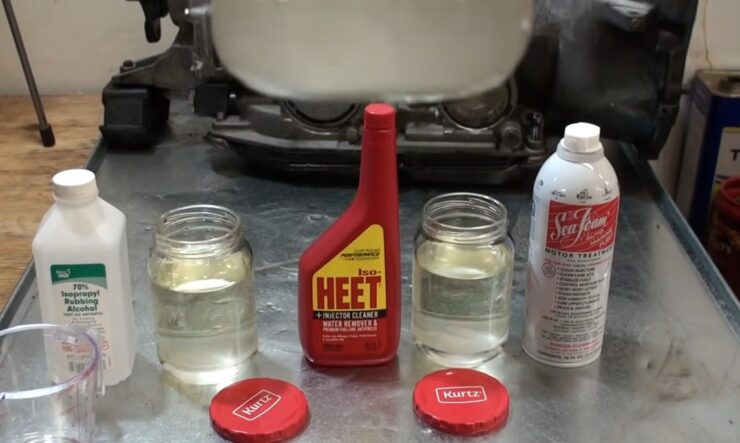
Unfortunately, the quality of gas matters and can even dictate your outboard’s performance. If the quality is poor, the engine’s combustion will be ruined.
The good quality of gas is indicated by the percentage of ethanol. If it’s more than 10%, it may harm your engine. After all, ethanol isn’t good for boat engines.
Other than that, the water can also play a role and make the mixture uneven.
Solution: Replace the Gas
The best way to deal with this problem is to replace the gas immediately. But this is no easy task. Because you’ll have to remove it from all parts of your engine.
Start by removing the gas from the fuel tank. Deplete it completely. After that, open up the fuel lines and primer bulbs.
Drain all the fuel from those components. These should get rid of most of the fuel. Do it until all fuels are drained from the entire outboard motor.
Get the new fuel that contains less than 10% ethanol. Simply look for low ethanol fuel on the market. There are plenty available everywhere.
Practice draining the gas once in a while to avoid this issue.
Problem 5: Fuel Hose Replacement
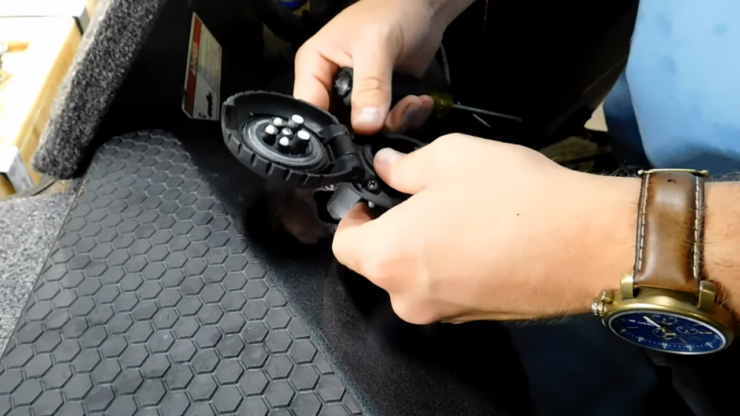
The interior liner of the fuel hose is often the source of debris infiltrating your fuel system. This debris bogs down outboard motors when applying throttle, causing an uneven performance.
Over time, fuel hoses break down due:
- Heat
- UV rays from the sun
- Bad gas (high ethanol)
- Fuel left in the lines during the off-season
Solution:
A complete replacement is needed to address this problem. More of the interior liner will degrade over time, causing repeated issues.
Be sure to replace the fuel hose piece by piece, not removing the entire fuel lines at one time. The reason for this is that it is easy to forget a part (i.e. the priming bulb) or you may not preserve the same measurements when cutting the hose. Also, be sure to adequately secure any hose clamps to prevent air, water, or debris from entering the engine.
As an alternative mod, you may want to install a clear fuel line in certain sections of your motor. The purpose of this modification is to give you a clear window on whether air, water, or debris is present in your fuel. When installed, you can observe the presence of contaminants from foggy lines, air bubbles, and discoloration.
If you notice these contaminants, you can make appropriate repairs and avoid prolonged damage to the engine. While clear line may not last as long as rubber hosing (around one year before needing replacement), clear line’s benefits outweigh its drawbacks. Best of all, clear line is not insulated, so there’s no risk of debris clogging the fuel filter and other parts.
Problem 6: Faulty Impeller
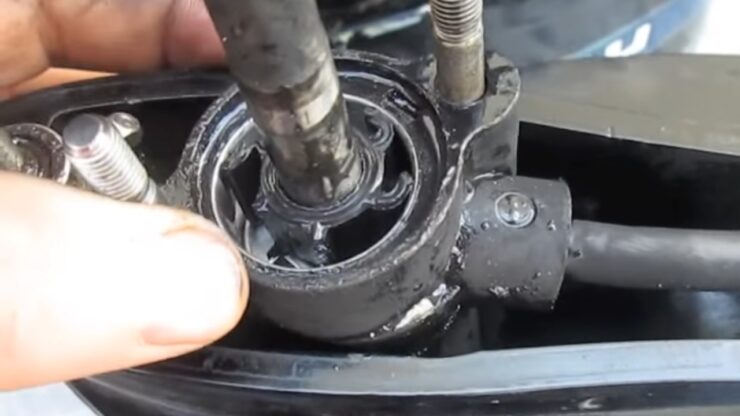
The cooling system for the majority of 2-stroke and 4-stroke outboard boat motors circulates water throughout the engine to control temperature and prevent overheating. The water pump pulls water through the cavity using a rubber impeller that is keyed to the driving shaft on top of the lower unit during normal operation by drawing water into the intake grates on the lower unit.
The engine can no longer be adequately cooled when the impeller is old, clogged, or misaligned. This causes the engine to overheat and set off safety devices that stop the engine from operating at high temperatures. Your outboard’s impeller is probably to blame if it won’t throttle up.
Solution:
Start by examining the telltale hole, which causes the outboard motor to release a thin, visible trickle of water. This serves as a useful cue that cooling water is moving. To avoid overheating your engine, perform this test in the water or while connected to a freshwater supply. Insects and other pests frequently build nests in this region when boats are in storage, so look for any obstructions and remove them.
After that, examine your impeller. Undo the bolts on the water pump housing and remove the lower unit to have access to it. Remove the impeller entirely if there is any debris encircling it, then check for any signs of damage (such as scarring, bending, grooving melting). If it’s damaged, you’ll need to replace the old impeller with a new one that matches. Fortunately, this is a simple replacement that only requires a few tools.
FAQs
What causes a 2 stroke outboard to bog down?
2-stroke outboard may bog down if there’s an insufficient amount of fuel. In other words, if enough fuel doesn’t reach your engine, it’ll lose power. Like outboard engines, it can happen in lawn mowers, garden strimmer’s, or chainsaws. To solve this problem, simply refuel the engine.
What causes an outboard motor to lose power under load?
An outboard motor may lose power under load due to tangled propellers and fuel leakage. Air leakage in fuel lines and spark plug corrosion can also cause power loss. Other than these reasons, bad gas quality, and a bad impeller are also possible reasons. These are the main culprits.
Why is my outboard not running at full power?
If your outboard isn’t running at full power then spark plugs can be the issue. If the ignition isn’t being processed properly the outboard won’t throttle up. You may also have to check the fuel filters which are vulnerable to dirt and debris. Solving these problems can fix this issue.
Conclusion
That was everything we could deliver and explain on outboard will not throttle up. We hope that our detailed discussion was able to give you some insights.
If your problem still isn’t fixed, check the impeller and fuel pump. These parts usually require an immediate replacement if gone bad.
Call for experts if you think this is too much to handle. They’ll inspect the boat and detect the problem. Also, don’t forget to claim replacement warranties!
Finally, have a nice day and happy sailing!
I’m Liam Jackson, the proud owner and driving force behind KayakPaddling.net. Born somewhere in the expansive beauty of the United States, I’ve nurtured a lifelong passion for kayaking and fishing that has led me to explore the far corners of our nation’s waterways.
Related Posts:
- 16 Best Kayak For Beginners 2024 - Kayaking Adventure Gear
- 15 Best Baitcasting Reel Under $100 2024 - Improve…
- 17 Best Trolling Reels 2024 - Enjoy your Fishing Adventure
- Heavy Duty Fishing: 11 Best Rods And Reels For Big Fish 2024
- 10 Best Fish Finders Under $200 2024 - Top Affordable Picks
- 12 Best Beach Wagons & Carts 2024 - For All-Terrain

